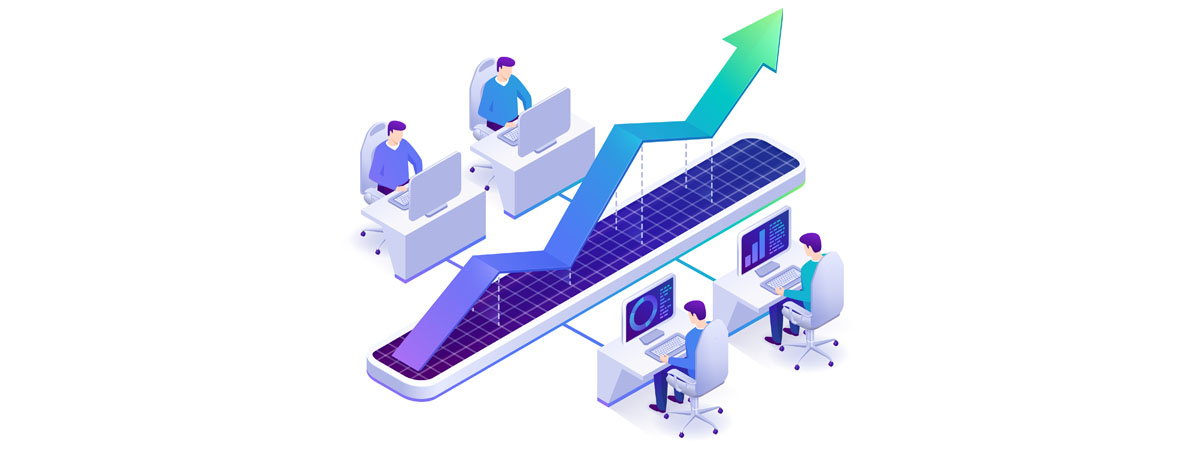2023 Cloud Forecast
We’ve booted up our crystal ball, spread out our Technology Tarot cards, and decrypted subliminal messages (check out our Rowdy Roddy Piper sunglasses video) to formulate our 2023 cloud forecast. Since Webapper started our cloud journey over a decade ago, we’ve tuned in to where the market is going. In 2022, for example, we built a serverless, cloud native application from scratch — hello, CloudSee Drive — as part of our own cloud adoption. It represents our own re-architecting of a monolith system already in the cloud. With that as our foundation, here’s what we see coming in the next twelve months.
Our Rowdy Roddy Piper Glasses…
1. The cloud will increasingly power hybrid work.
We’re a virtual company with staff across the US and beyond its borders. Working online is second nature to us, and after COVID-19, most of the world learned about remote work too. Hybrid work environments are here to stay. With smaller office footprints and happier teams, it makes financial and HR sense. Mobile matters more than ever.
2. Supply chain issues will become less of a bottleneck, increasing cloud usage.
Another adverse impact of the pandemic was disruption to the supply chain. Businesses held their breath as supplies of critical components like semiconductors dried up. As the supply chain injuries heal, the cloud will expand to meet growing demand.
3. More organizations will adopt a multi-cloud strategy.
To avoid outages, protect against vendor lock, and support a wide variety of computing needs, multi-cloud configurations will proliferate in 2023. AWS, Microsoft, and Google all play a significant role, although interoperability presents challenges — building cloud systems often relies on vendor-specific calls.
4. Cloud computing will continue going native.
We’ve espoused cloud native applications for quite some time. The reason for our emphasis is that cloud native leverages more benefits of the cloud – performance, reliability, and scalability. Modern applications also enable more innovation and integration — their open architectures enable new ideas to come to life.
5. Investment in cloud security will (and must) increase.
As more workloads move to the cloud, organizations must invest in securing them. No one eats in an empty restaurant, so cybercriminals will go where the best opportunities live. Security responsibilities are shared between cloud providers and residents. Providers regularly invest in finding vulnerabilities and updating processes and infrastructure. Application developers, DevOps managers, and infrastructure teams must all be more vigilant.
6. Organizations must keep an eye on runaway cloud costs.
With more and more machinery in the cloud, it’s easy to forget about unused workloads or test environments. IDC reports that almost 80% of organizations using cloud services will implement FinOps — a practice to manage cloud costs — by 2023. Get a head start by checking out our report on cloud economics!
7. Low-code and no-code cloud services will continue growth.
Platforms like Airtable and Clickup have made a dent in the universe. These solutions empower non-technical users to tap into cloud data and build their own workflows. By 2030, the market is estimated to reach a 148.5 billion valuation, growing at 27.8% annually.
8. AI adoption moves to the mainstream.
Artificial intelligence (AI) continues making breakthroughs in areas like natural language processing, leading to improved adoption of AI by businesses. The market is projected to reach almost $2 trillion by 2030, with annual growth of over 30%. AI will help guide decisions in the business’ marketing, e-commerce, product management, and other key operational tasks.
9. XaaS cloud offerings increase (of course!).
A growing number of organization rely on XaaS — Anything as a Service — which leverages cloud computing to provide services. XaaS includes IaaS, PaaS, SaaS, DaaS, and FaaS. The global XaaS market is currently growing over 25% each year. Core cloud computing has become a business necessity, and more companies’ digital initiatives are making XaaS increasingly important.
10. Waging a war for top talent will make a difference.
The tech industry’s growth has lead to demand for skills like large-scale data modelling, software support, software development, cloud architecture design, and cybersecurity. Despite layoffs in 2022, competition will remain fierce in the coming years for these essential personnel. Part of the challenge is that employers and employees aren’t on the same page about productivity, performance measurement, compensation, and remote work. Winners will be organizations that create a workplace culture where candidates want to work and employees want to stay.
Our 2023 Cloud Forecast
Our crystal ball, tarot cards, and decrypted subliminal messages may indeed provide an accurate look at what’s coming this year. Cloud computing is here to stay, and growth will likely continue based on increased adoption of functions like big data analytics, modern applications, AI, and DevOps. We’ll continue pursuing this path all year, and we’ll reassess in December to see how it turns out…


Leave A Comment